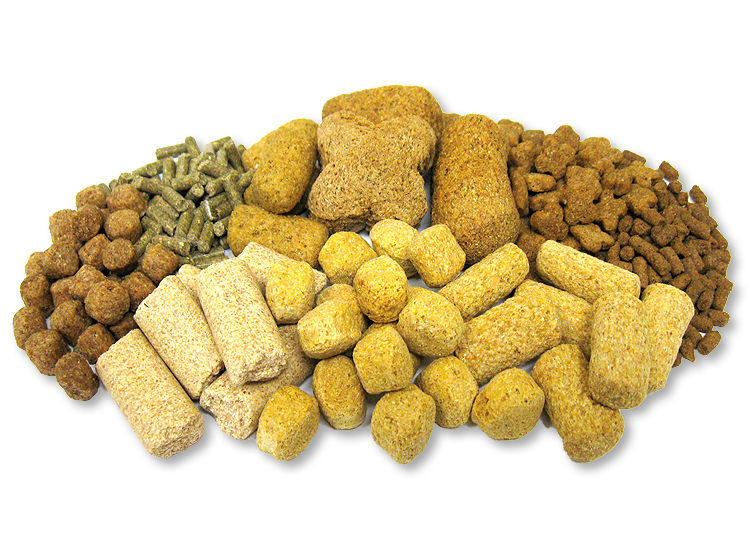Shelf Life of Diets Used in Research

Shelf life of diets used for research is subjective. It is impossible to predict definitively when a specific diet is no longer suitable for purpose. This could mean deficient in one or more nutrients, or that palatability has been negatively affected.
Perhaps a better question would be “what is the recommended use period?”. That is somewhat analogous to a best before date — which can be loosely defined as the anticipated amount of time that an unopened food product, when stored under appropriate conditions, will retain nutritional value or other qualities claimed by the manufacturer. Because researchers and institutions require guidance on the topic, we have summarized our recommendations for use period for Teklad products in the table below:
| Product Type | Recommended Use Period (Shelf Life) |
Recommended Storage Conditions |
Considerations |
|---|---|---|---|
| Standard Natural Ingredient Diets | 9 months | Cool, dry ≤70°F, ≤65% RH* |
Regular, Irradiated, and vitamin C containing diets |
| Custom Research Diets | 6 months | Cold 4°C or lower Cool, dry for some |
Variability in composition leads to general recommendation of 6 months. Will consider extensions. |
| Medicated Diets (Fenbendazole, Ivermectin, Uniprim) | 9 months | Cool, dry ≤70°F, ≤65% RH* |
Standard base diet; testing of aged diet provides confidence for efficacy for 9 months. |
| Bedding | Indefinite | Cool, dry ≤70°F, ≤65% RH* |
Not perishable, but ensure that packaging integrity is maintained so that moisture or pests cannot reduce product quality. |
*RH = Relative Humidity
Some factors that influence and affect suitability for use include:
- Vitamin Levels
- Moisture content
- Microbial content and risk for growth
- Packaging
- Storage temperature and relative humidity
These aspects are discussed in the other sections with relevance to the product type.
-
Standard natural ingredient diets
Standard natural ingredient diets fulfill the needs of laboratory animal colonies for breeding, growth and maintenance. These diets consist of relatively unrefined agricultural commodities such as grains, grain by-products, concentrated plant protein sources, animal proteins, and vitamins, minerals and added fats.
In these types of diets and across species, vitamin levels are generous relative to estimated requirements. The vitamin preparations have improved stability relative to the early years of diet manufacturing. Testing of aged diet, understanding of the effects of manufacturing, and resources to help estimate the rate of loss over time are supportive of a nine month use period.
In Europe and Asia, these types of diets (including those produced by Envigo) are routinely used through nine (9) months, per local practices and regulatory oversight.
Water is a catalyst for reactive processes which can lead to vitamin degradation or fat oxidation and allows for microbial growth. It is the amount of available or active water (i.e. that not bound to other chemicals) that has to be considered. This is a useful proxy for quality and safety.
These standard natural ingredient have moisture levels ranging from 8-12%, and water activity less than 0.7. This limits the potential for microbial growth and oxidation reactions.
If packaging is too permeable, and humidity is high (>70% RH) in the storage area, the diet could take up water from the environment. This could accelerate degradation. Irradiated standard diet is packaged in capsacs where the inner plastic is relatively impermeable. Non-irradiated standard diet is packaged in two-ply paper bags (and for some diets there is a plastic film liner); this will offer significant barrier to moisture.
The choice of 70°F as an upper limit is relatively arbitrary, primarily chosen for practical reasons. This is an established guideline dating back decades, to early versions of the Guide for the Care and Use of Laboratory Animals. The typical storage temperature variations seen in academic, biotech, and pharma facilities are minor and inconsequential to diet quality, particularly when diets contain nutrient levels in considerable excess of requirements.
While the Guide mentions 50% or less relative humidity (RH), this is not practical in all geographies or seasons. The logic of choosing 65% RH as an upper limit is that this will minimize the likelihood of mold growth with extended storage. Microbial growth can only occur when there is sufficient water available.
For more information on this topic, contact us as askanutritionist@inotivco.com
-
Custom diets
Custom research diets are diverse in their composition. Many are purified (consist of refined ingredients like casein, sucrose, corn starch), others have as their primary ingredient a standard diet, and some are made from scratch using those same natural ingredients. Custom diets are used for very specific purposes and some are intentionally deficient in one or more nutrients.
The overall composition – vitamin levels, fat sources and/or levels – can limit the practical use period to no more than 6 months, or possibly even less. Purified diets have a low starting microbial load and often lower moisture content than standard diets. Colder storage temperatures (i.e. freezing) and vacuum packaging can favor a longer use period.
For some diets (particularly purified), the margin between estimated vitamin requirements and the formulated levels is not wide compared to standard diets. There could be risk using these types of diets for more than 6 months.
For custom diets that consist of a standard diet base with an added ingredient such as doxycycline or tamoxifen, the stability of the added ingredients along with the vitamin levels in the base diet can warrant a 9 month use period.
Overall, 6 months is a safe and practical use period for many custom diets, with multiple factors to consider when making a decision to support longer use by a customer.
For more information on this topic, contact us as askanutritionist@envigo.com
-
Medicated diets
Inotiv's stock medicated diets (TD.01432/TD.01432.I, TD.130755, TD.06596) have the drugs fenbendazole, ivermectin, or Uniprim (respectively) added to a standard natural ingredient base diet.
As described in the standard natural ingredient diet section, the base diet is suitable for use to 9 months.
The primary purpose of using this type of diet is to deliver medication for treatment (typically short term) or prophylactically (either short term as in quarantine, or longer term for some immunocompromised models). Therefore for this type of diet the primary consideration is the stability of the medication over time.
Testing of these medications out to 12 months and sometimes longer shows that levels at 9 months are withing the range seen shortly after manufacture. Therefore, use out to 9 months would not be expected to reduce treatment efficacy.
For more information on this topic, contact us as askanutritionist@inotivco.com
Teklad product types

Ask a nutritionist
Live chat Live chat
Teklad diet selector
Selector app Selector app
SCIENTIFIC INSIGHTS
Keep up-to-date with the latest industry thinking and scientific insights
Explore today Explore today
More than 90 years of working together, to build a healthier and safer world
Explore our history Explore our history



